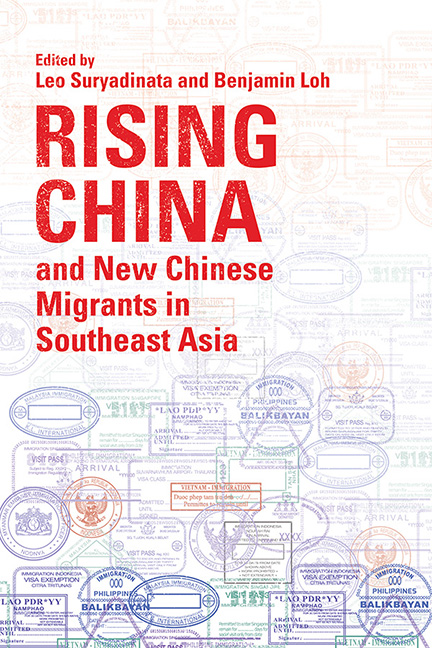Book contents
- Frontmatter
- Contents
- About the Contributors
- Introduction: Rising China and New Chinese Migrants in Southeast Asia
- Part I General Overviews on Rising China and Xin Yimin
- Part II China’s Soft Power, Xin Yimin and Local Communities
- Part III New Chinese Migrants and Local Communities
- Part IV New Chinese Migrants and Local Economies
- Index
3 - Confucius Institutes in Southeast Asia: An Overview
Published online by Cambridge University Press: 09 January 2024
- Frontmatter
- Contents
- About the Contributors
- Introduction: Rising China and New Chinese Migrants in Southeast Asia
- Part I General Overviews on Rising China and Xin Yimin
- Part II China’s Soft Power, Xin Yimin and Local Communities
- Part III New Chinese Migrants and Local Communities
- Part IV New Chinese Migrants and Local Economies
- Index
Summary
A Confucius Institute (CI), essentially, is a language school that teaches Mandarin (the standard form of modern Chinese) and operates outside China. It functions as a partnership between a Chinese university and a host university of the country (or administrative district) in which it operates. The former will provide teaching materials and instructors as well as an administrator known as the Chinese Director. Whereas the latter supports the running of the institute by providing infrastructure such as teaching facilities and local connections as well as an administrator known as the Foreign Director, who usually is a faculty of the host university and whose duty is to ensure the institute complies with the academic, administrative and fiscal statutes and regulations of the university.
The effort in establishing CIs worldwide was initiated by the government of the People’s Republic of China (PRC) to assist the international community to develop a capacity for teaching Chinese language and culture in their own nations, a facility which was very much non-existent or scarce in most of the countries in the world. In the early 2000s, the Chinese government set up a bureau called Hanyu Guoji Tuiguang Xiaozu Bangongshi (汉语国际推广小组办公室), or Office of Chinese Language Council International, to realize this initiative. This office, located in Beijing, was to become the central agency overseeing the CIs that had proliferated rapidly over the globe in the one and a half decades since 2004. It was more widely known by its acronym ‘Hanban’ (汉办), or the Confucius Institute Headquarters.
The first CI in the world was established in Seoul, the capital city of South Korea, in 2004. Ten years later, 475 CIs were operating in 126 countries. By 2018, the number had further increased to 548 CIs in 154 countries. The phenomenal growth of CIs, coupled with the rising economic power of China, however, is viewed by some as alarming. These institutes, entrusted with the primary duty of teaching Chinese language and culture, have come to be seen as a platform for the PRC to exercise its ‘soft power’.
- Type
- Chapter
- Information
- Rising China and New Chinese Migrants in Southeast Asia , pp. 49 - 67Publisher: ISEAS–Yusof Ishak InstitutePrint publication year: 2022

